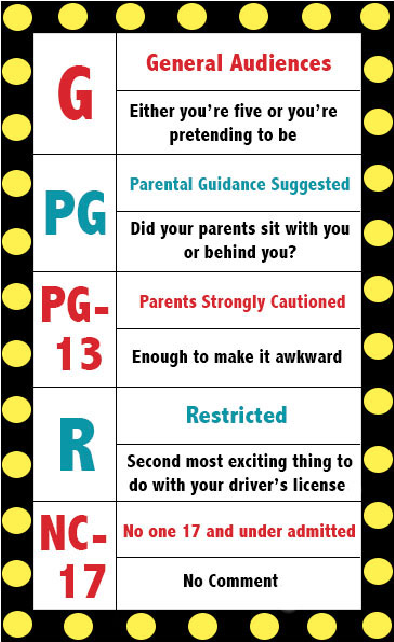staff editorial
Since movies first came into fashion they have been a source of entertainment for people all around the globe. But virtually no censorship existed to regulate what moviegoers saw. In the United States, this led to the creation of the Motion Picture Association of America (MPAA), but its practices have gone unconstrained, and the movie rating system is in dire need of a change.

The MPAA is famed for its rating stamps found on most films released to the public: G, PG, PG-13, R and NC-17. However, what each rating means is unclear.
A recent study called “Gun Violence Trends in Movies” from the American Academy of Pediatrics concluded that, since the creation of the PG-13 rating in 1985, violence in PG-13-rated films has nearly tripled, and the line between R and PG-13 is quickly beginning to blur.
The release of the film The Wolf of Wall Street is a prime example of how the ratings system seems particularly misleading.
“I wasn’t expecting what was in the film,” said sophomore Noah Bernstein. “There were a lot of swears and nudity.”
The film actually broke the record for the number of f-words in a non-documentary film, with 506 in the nearly three-hour movie, according to Guinness World Records. The MPAA rated the movie R.
Since the creation of the MPAA in 1992, there has been an obvious inconsistency in its ratings, but this is not solely the fault of the MPAA raters. This inconsistency is also the result of changes in social standards of morality and behavior.
In an article in the Los Angeles Times, Ethan Noble, motion picture consultant, remarked on the disconnect between what the rating board wants and what filmmakers want.
The disconnect, he said, “comes from changing social mores about language and other areas of explicit content.” The MPAA, Noble said, “is basically using the same system it’s had in place for years.”
Rather than abolishing movie ratings altogether, as some have suggested, the ratings need to be reformed in a way that will better aid viewers in determining if a movie is appropriate for age-restricted audiences.
The best way to rate movies is to create a citation system that will allow viewers to read about the content and rate it themselves. The MPAA needs to take a similar approach as other countries have to improve rating systems by providing in-depth evaluations of the movies’ content, but also go a step further and provide a summary of each scene it deems inappropriate for younger audience members.
The Wolf of Wall Street, for example received a strong impact rating in themes, violence, language and nudity, and a high impact rating in drug use and sex from the Australian Classification Board.
Film ratings system must adapt to changing standards
February 10, 2014
0
More to Discover

